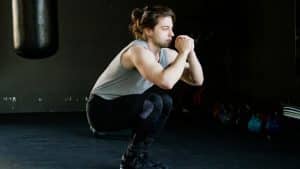Why? That’s the question I often ask myself in the middle of a particularly hard workout. Why am I doing this? When your body feels like nothing but sweat and pain, it can be hard to remember that there’s a point to it all.
One of the biggest challenges when it comes to exercise isn’t the physical struggle. It’s convincing yourself that that struggle is a good thing. In the early hours of the morning when the sun isn’t even up yet, when you’ve just finished a long working day and all you want to do is go home, when your family is heading to the beach and you have a training session that you can’t miss… those are hard times.
With motivation being so important to sports performance, it’s no wonder it has become one of the most researched topics in sports psychology. A lot of focus goes into what motivation comes from inside you and what is driven by outside factors.
There are two big theories you might be interested in if you want to understand the whys of motivation. One’s called Achievement Goal Theory, and the other is Self-Determination Theory.
Achievement Goal Theory (AGT) is about how every person has goals that they want to achieve and their behavior is intentionally directed towards those goals. They engage with certain activities, even unpleasant ones, because they move them closer to their target. How they respond to different events is also colored by how it relates to their overall purpose.
Behavior in AGT is divided into task-involved and ego-involved. Task-involved is about when you try to master a certain skill or ability. Ego-involved is when you try to perform that skill or ability better than someone else. The first is intrinsic, while the second is focused on outside factors.
Self-determination theory (SDT) has to do with each person’s individual needs and how they try to satisfy them, so it’s almost entirely internal. Three main needs are generally identified: autonomy, competence and relatedness.
Autonomy is about a person feeling they have freedom and control over their own lives and that they are not being forced into things by others. Competence is about feeling and being perceived as capable. Relatedness involves how you interact with others.
Considering the elements of AGT and SDT may help you figure out how to motivate your sports performance.




